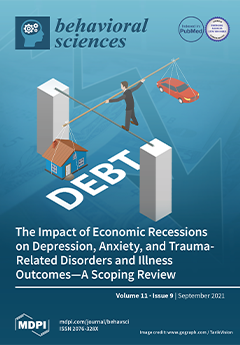This study explores differences in stress, anxiety, and depression experienced by different ethnic groups during the COVID-19 pandemic. This was a cross-sectional online survey of subscribers of the COVID-19 Text4Hope text messaging program in Alberta. Stress, anxiety, and depression were measured among Caucasian,
[...] Read more.
This study explores differences in stress, anxiety, and depression experienced by different ethnic groups during the COVID-19 pandemic. This was a cross-sectional online survey of subscribers of the COVID-19 Text4Hope text messaging program in Alberta. Stress, anxiety, and depression were measured among Caucasian, Indigenous, Asian, and other ethnic groups using the Perceived Stress Scale (PSS)-10, Generalized Anxiety Disorder (GAD)-7, and Patient Health Questionnaire (PHQ)-9 scales, respectively. The burden of depression and stress were significantly higher in Indigenous populations than in both Caucasian and Asian ethnic groups. The mean difference between Indigenous and Caucasian for PHQ-9 scores was 1.79, 95% CI of 0.74 to 2.84,
p < 0.01 and for PSS-10 it was 1.92, 95% CI of 0.86 to 2.98,
p < 0.01). The mean difference between Indigenous and Asian for PHQ-9 scores was 1.76, 95% CI of 0.34 to 3.19,
p = 0.01 and for PSS-10 it was 2.02, 95% CI of 0.63 to 3.41,
p < 0.01. However, Indigenous participant burden of anxiety was only significantly higher than Asian participants’ (mean difference for GAD-7 was 1.91, 95% CI of 0.65 to 3.18,
p < 0.01). Indigenous people in Alberta have higher burden of mental illnesses during the COVID-19 pandemic. These findings are helpful for service planning and delivery.
Full article






